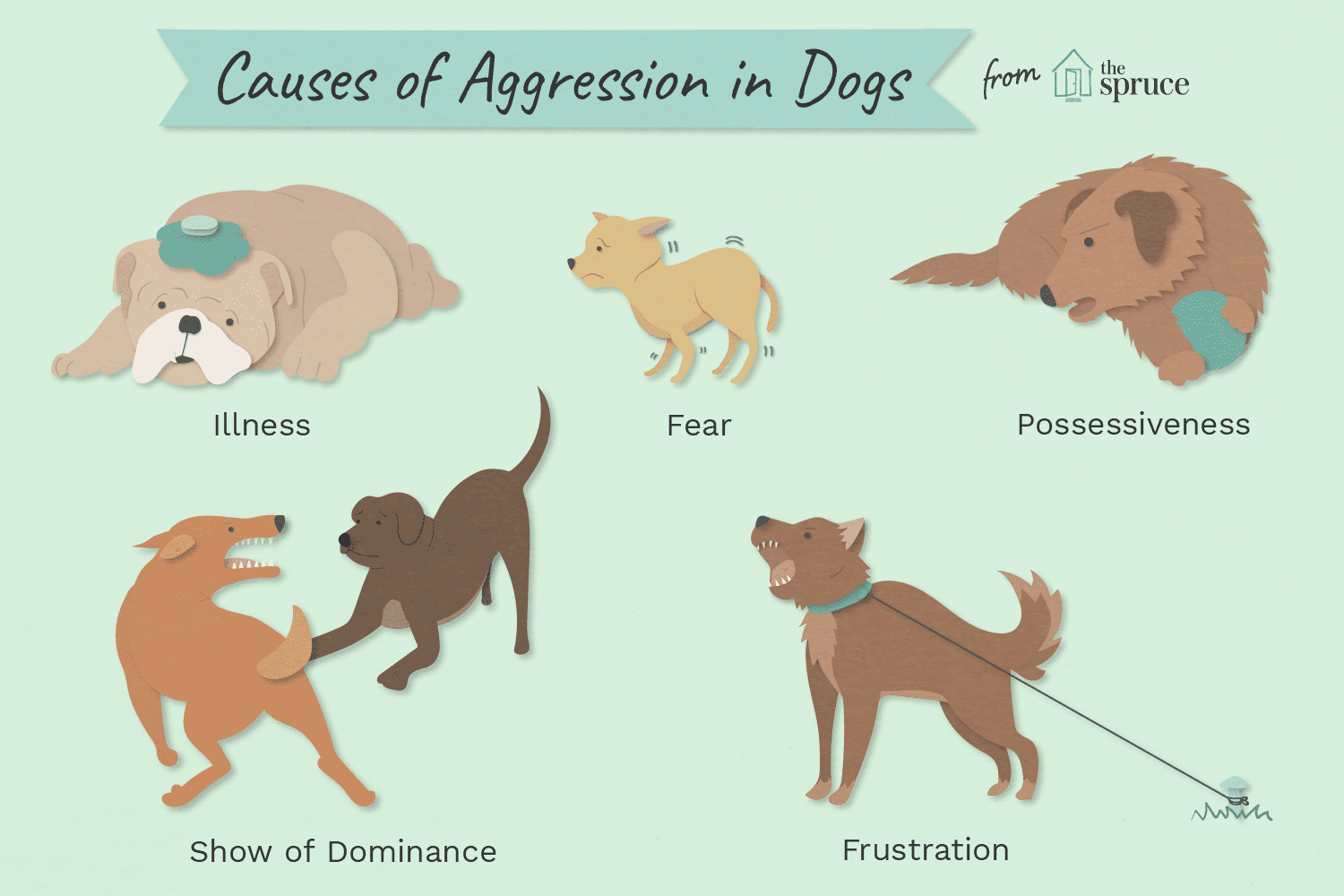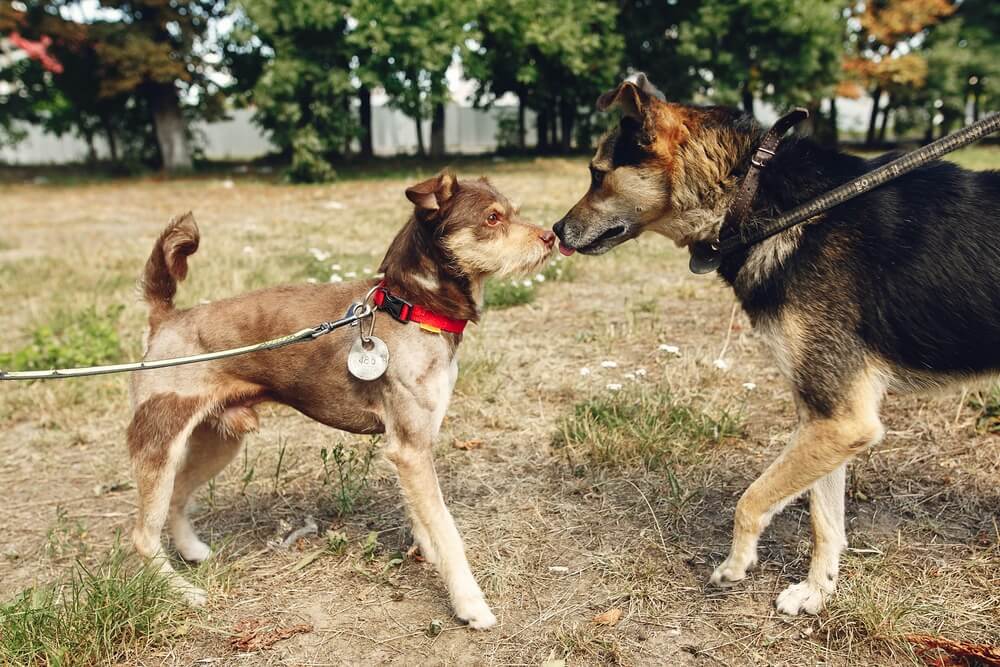Dog Behavior 101: Aggression

What Is Dog Aggression?
Most wild animals are aggressive when it comes to guarding their territory and defending themselves and their young. Dogs, even domesticated ones, are no exception. They also use aggression (or the threat of aggression) to keep peace and determine hierarchy in a pack. Other dogs may only be frustrated by a lack of physical exercise. Whatever the signs of aggression your dog displays, the most important thing is to understand what triggers the behavior. There are many different reasons why a dog might be aggressive and knowing what the underlying cause is will make treatment easier and more efficient. Even though dog aggression is among the most serious behavior problems you might have to deal with, it is still just that – a behavioral problem that can be corrected. It is one of the more difficult to handle though.
Signs of Aggression in Dogs
How can you tell if a dog is nervous to the point of being aggressive? What kind of body language and signs is a precursor to an attack? Knowing the answer to these questions can help you anticipate aggressive behavior, and, hopefully, stop it in time. Apart from Sudden Onset Aggression syndrome, which is a rare condition, an aggressive attack can always be predicted by the specific behavior that precedes it. Here are the most common signs of aggression in dogs:
- Stiff body posture
- Ears pinned back
- Growling
- Baring Teeth
- Snarling
- Bites of different intensity (from light snipping to puncturing bites)
Causes: Why Is My Dog Aggressive?

To be able to truly understand how to stop dog aggression, you’ll need to find out what makes your dog aggressive in the first place. It’s very rare for a dog to become violent out of nowhere. Most often, the main culprit is a lack of proper socialization and training, but there are other causes that can contribute to this issue. Here are the most common causes of dog aggression:
- Pain or illness
- Fear
- Establishing dominance
- Protecting territory or possessions
Maybe your feisty furball has a stressor that makes them rage, or they are acting out as a consequence of a past trauma. In case your dog suddenly starts acting aggressive, it might be their way of signaling they’re in pain. But how are you to know, for sure, what is the cause of your dog’s violent behavior?
9 Types of Canine Aggression
- Territorial Aggression - Dogs don't know the difference between friend and foe, so some may show aggression to anyone stepping into your home.
- Possessive Aggression - Dogs may zealously guard their food, toys, or other possessions, whether the item is "needed" or not.
- Predatory Aggression - This stems from inborn canine instincts to hunt and chase fast moving things. Aggression is when it is out of control. It's best to train your pup to stop-play-fighting as early as possible.
- Fear Aggression - A dog that is concerned, stressed or trapped may lash out because of fear."
- Social Aggression - A dog who believes they're the leader of the pack may show aggression towards people or other animals around them.
- Pain-related Aggression - A usually gentle dog can become aggressive if he's in pain or sick.
- Protective Aggression - May take their role a step too far if they feel their owner or family members are being threatened.
- Frustration Aggression - This occurs when a dog is excited or aroused from something but prevented from approaching it.
- Redirected Aggression - When someone interferes with a dog that's already become aggressive, the dog may turn against the intervener.
Many, if not most, dogs will exhibit some type of unfriendliness around strangers and unfamiliar dogs. This can serve as a protection for you and your family. Some dogs may only be aggressive towards other dogs or animals. Others may be aggressive towards a particular category of people, such as the vet, the mailman, or people in wheelchairs.
Can You Stop a Dog From Being Aggressive?
With the proper behavior modification techniques, it's possible to reduce the risk of aggression. However, no veterinarian or trainer can guarantee that a dog is 100% "trained." There will always be a risk when dealing with an aggressive dog. Even if a dog has been well-behaved for years, a stressful situation could potentially trigger some of those behaviors again. This is why your dog needs consistent aggressive-dog-behavior training.
Social Exposure
Dogs are naturally social animals. Work on your pet’s social skills by exposing them to other animals. You can enroll your pup in a training class, bring them to the park or doggy daycare. The more exposure they have with other dogs, the more likely they become comfortable, hence lessen the triggers of aggression.

Final Thought
Depending on the severity of your dog’s aggression issues, the solution can be anything from a simple change in routine to working with a professional dog trainer. Whichever ends up being the right choice for you and your dog, just remember: it’s an effort well worth it.

